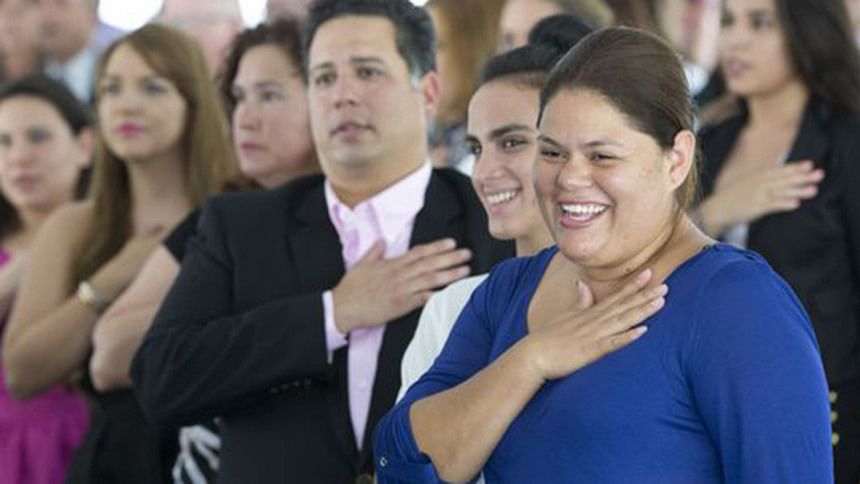Foreign born population at high in US

The percentage of foreign-born population living in the US is increasing at a rate that it could possibly break a 125-year-old record within the next decade, according to a Pew Research Center report out today.
Foreign born people living in the US reached 13.7% in 2015 and is projected to hit a record 14.9% in 2025, the report said. The country's previous high of 14.8% was set in 1890, when waves of Irish, Italian, Polish and other immigrants were coming to the US, reports the American daily USA Today.
The term "foreign-born" includes naturalized citizens, legal permanent residents, visa holders and undocumented immigrants.
The findings come out at a critical time when the presidential campaign as candidates from both parties debate the proper role of immigration in the country. The foreign-born population which represents a growing share of the electorate that Democrats and Republicans court because that voting bloc is big enough to tip presidential elections.
Leading Republicans, including front-runner Donald Trump, say legal and illegal immigration have gotten out of control. Trump and others say the country needs to limit legal immigration, and all the GOP candidates push for increased border security, reports USA Today.
Democrats, led by Hillary Clinton, have adopted a more welcoming message, calling for protections for undocumented immigrants living in the country and an immigration system that helps some groups of immigrants enter the country.
Roy Beck, executive director of NumbersUSA, a group that advocates for lower levels of immigration, said Trump and others tap into a legitimate fear that immigration levels are getting out of control.
"This has been our point all along: If you want to have a good situation for immigrants, there's a threshold that you've got to keep it below," Beck said. "We know what happened last time. It was a very difficult time. And it's not just about the American-born being hostile toward the foreign-born, but the inability of the foreign-born to get ahead, to live the American Dream."
Mark Hugo Lopez, co-author of the report, said some flows of migration to the USA, including illegal immigration, have slowed in recent years as the economy struggled and the federal government strengthened border security. But the foreign-born population continues to increase, because there are still far more people trying to reach the USA than trying to leave, he said.
Lopez said the characteristics of immigrants may change over time. For example, Asians will replace Latin Americans as the dominant minority force in the USA by 2055, and Africa may send more people to the USA and other countries in the upcoming decades. He said the idea of the USA as the world's most sought-after destination for immigrants will remain.
"We have seen the United States change its immigration laws before. It became very restrictive in the 1920s, and it's very possible that could happen again," he said. "But today, more Americans believe immigration is a strength rather than a burden."
Other findings from the report:
- The combined population share of foreign-born people and their U.S.-born children is 26%. Pew estimates that figure will continue rising to 36% in 2065.
- Asians are set to surpass Hispanics as the largest immigrant group. In 2015, 47% of the foreign-born population is Hispanic, and 26% is Asian. By 2055, Pew estimates that 36% of the foreign-born population will be Asian, compared with 34% Hispanic.
- Since the passage of the Immigration and Nationality Act of 1965, immigrants, their children and grandchildren accounted for 55% of the country's population growth, a total of 72 million people.
- More Americans (45%) say immigrants make American society better in the long run than those (37%) who say immigrants make it worse, according to a poll conducted by Pew for the report.

 For all latest news, follow The Daily Star's Google News channel.
For all latest news, follow The Daily Star's Google News channel. 



Comments